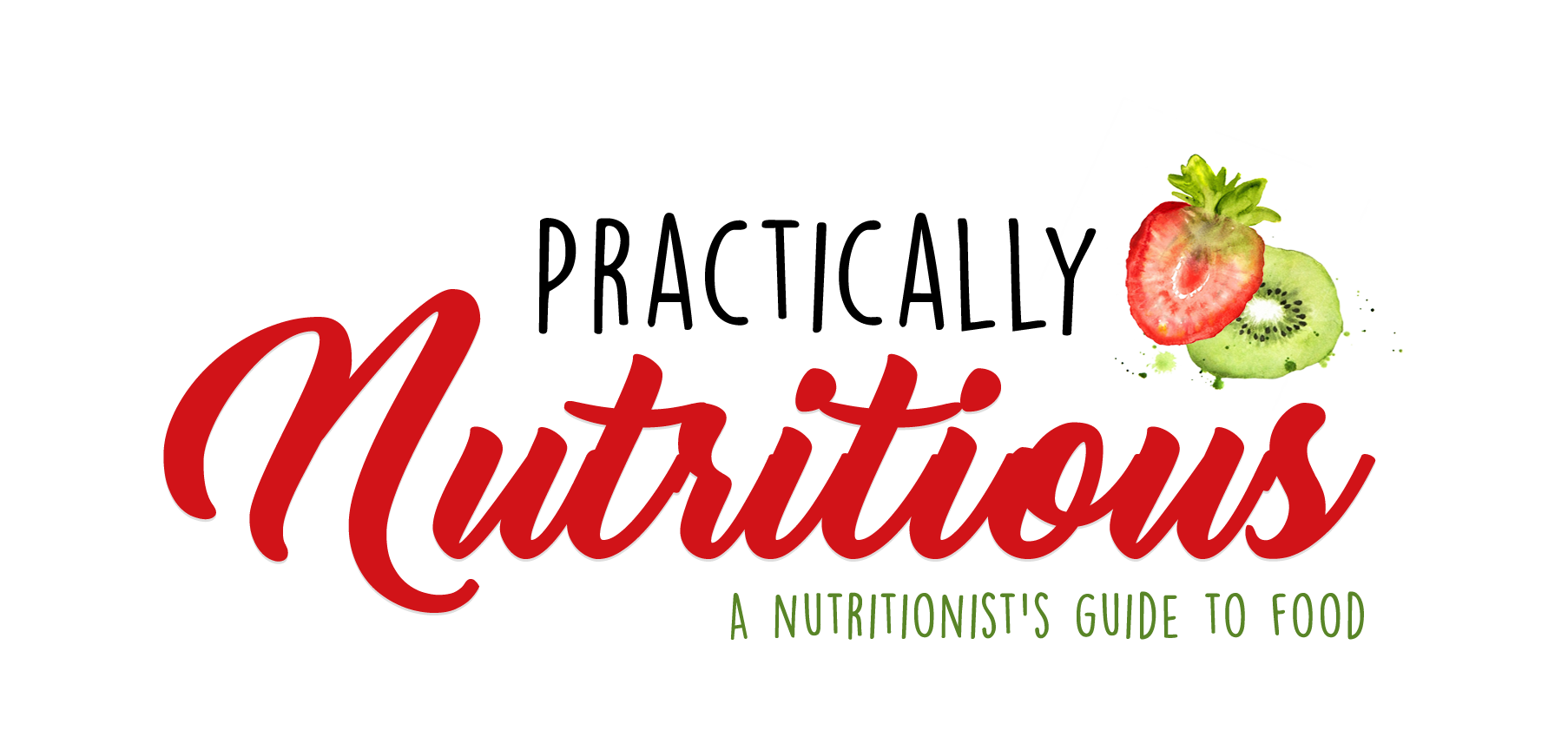One thing dietitians often teach their clients is how to read and understand the labels on food products. This is because food labels are a valuable source of information on the foods you buy, and can help you decide which food products are best for your health. This is why I’ve decided to create this tutorial. I will show you what I think are the most important aspects of a food label and what to look for when comparing different products.
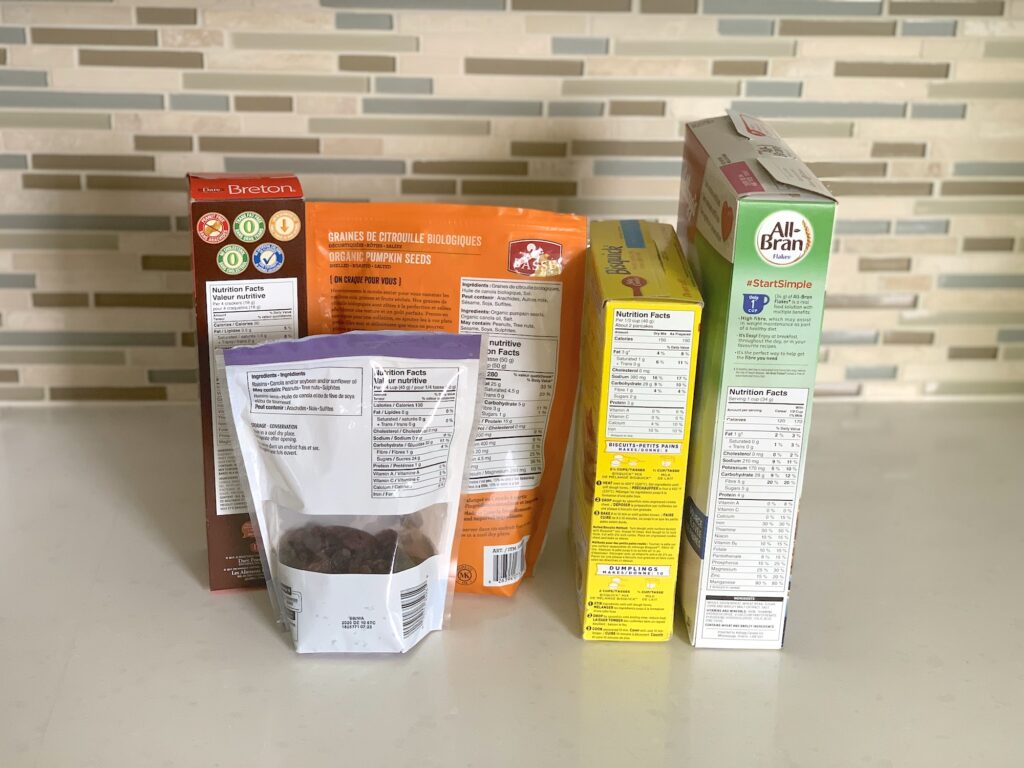
Note: because I am located in Canada, I will be using Canadian food labels as examples and some of the information here is specific to Canada. However, most of the tips can be generalized to other countries’ food labels.
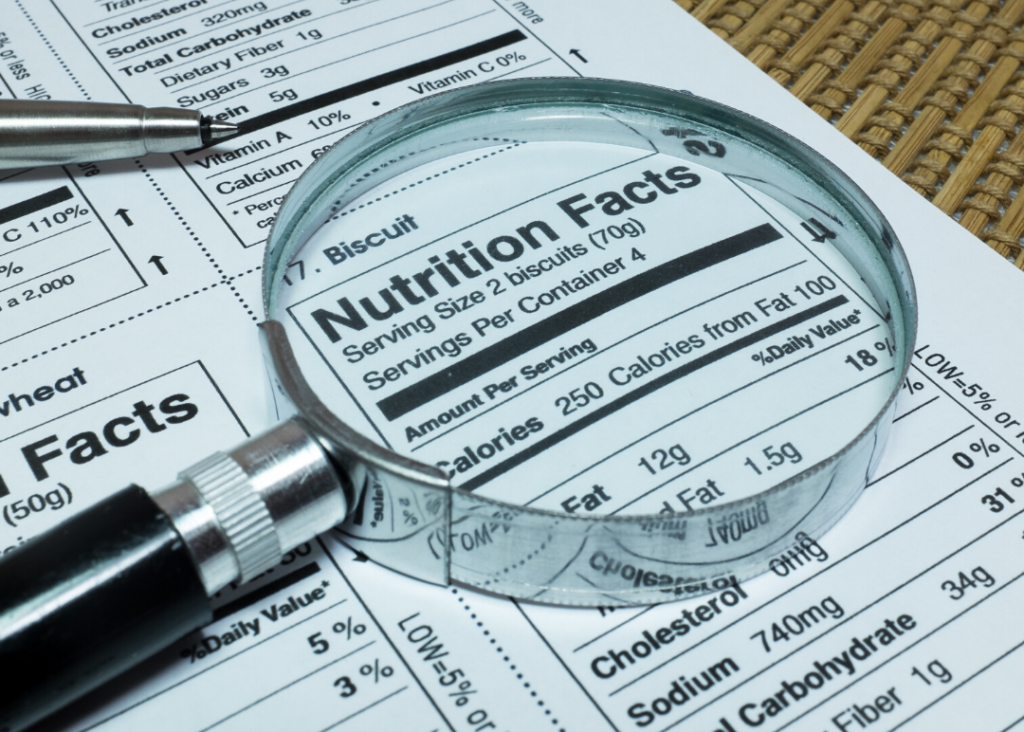
Canada’s New Guidelines
What slightly complicates this post is the fact that Canada recently came out with NEW regulations for their food labels. The government gave the food industry 5 years to implement the proposed changes, up until December 2021, which means that right now food labels can either have an old look or a new one. I will review both so there is no confusion.
The Nutrition Facts Table
Let’s begin with the element most people are familiar with – the nutrient facts table. Below is a picture of the changes the Canadian government has made:
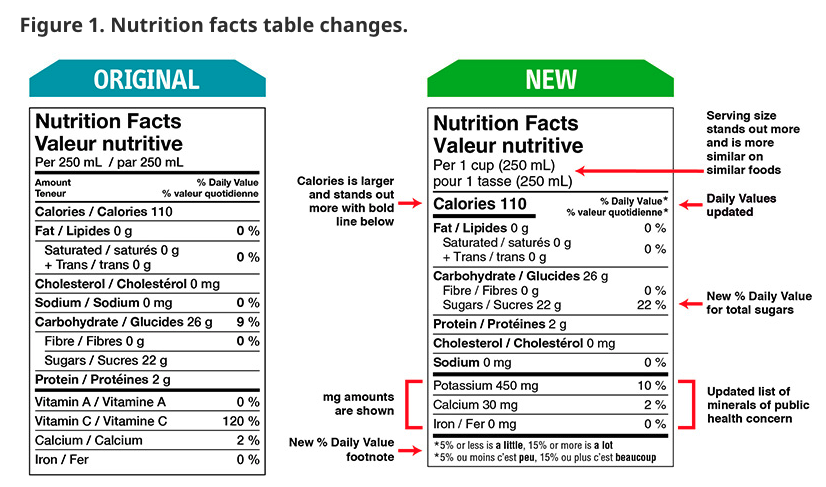
You can find this picture, along with a detailed explanation of the changes, at the Government of Canada’s website: https://www.canada.ca/en/health-canada/services/food-labelling-changes.html
You may see either of these variations in Canadian stores today, and other countries also tend to have similar tables. All in all, most nutrition facts tables have the same elements. Let’s review the most important elements to look for.
Serving Size
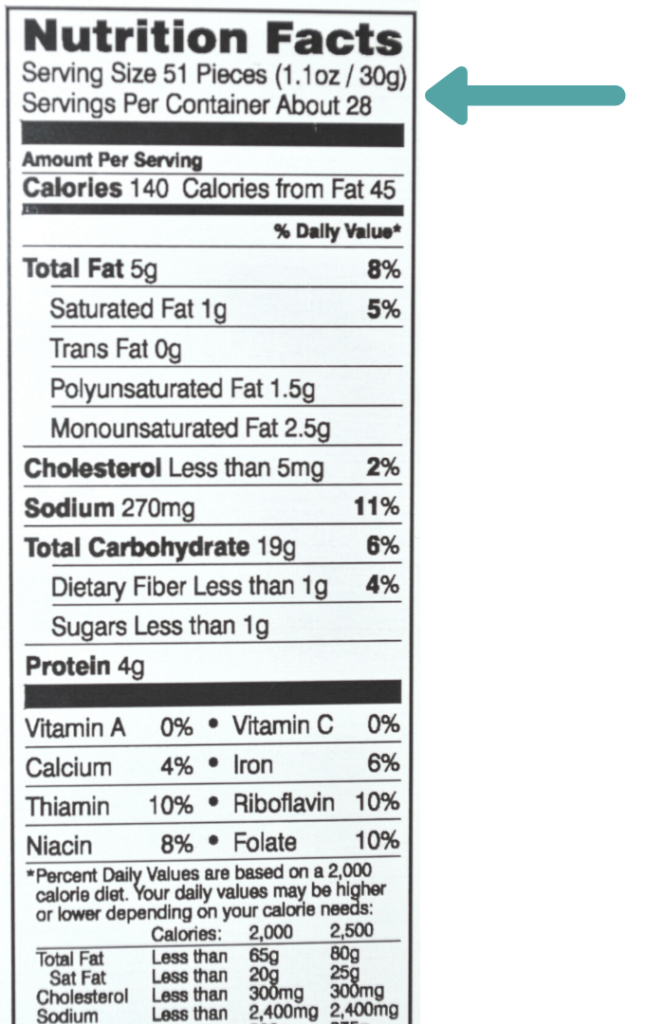
When choosing a food product you should first look at the serving size. The serving size is the amount of food that was used to calculate the nutrient amounts on the table. It is not necessarily the amount you should be eating. If the serving size on the product you’re looking at is the amount you normally eat, then you’re good to go. But if it’s lower or higher, you need to do some math. For example, if you’re looking at a juice carton and the serving size is for half a cup, but you normally drink a full cup, then keep that in mind and double the nutrients you see in the table. This also goes when comparing two products to figure out which is best to buy. When comparing, make sure the serving sizes are the same. If they aren’t, some mental math will have to be involved.
Luckily, the mental math issue will be resolved in the new version of the Canadian nutrition facts table, since new regulations require specific servings sizes for specific products. This means, for example, that all juice cartons will have to use the same serving sizes, even if they are from different food companies.
Percent Daily Values (% DV)
These are the percentages you see on the right-hand side of the nutrition facts table. They are there to help you make informed choices because most people don’t know what is considered “a lot” or “a little” of each nutrient. These are calculated by taking the amount of each nutrient in the food product and dividing it by the amount recommended for a healthy diet, then making that into a percentage. As a general rule, 5% or less is considered “a little”, and 15% or more is considered “a lot”.
Calories
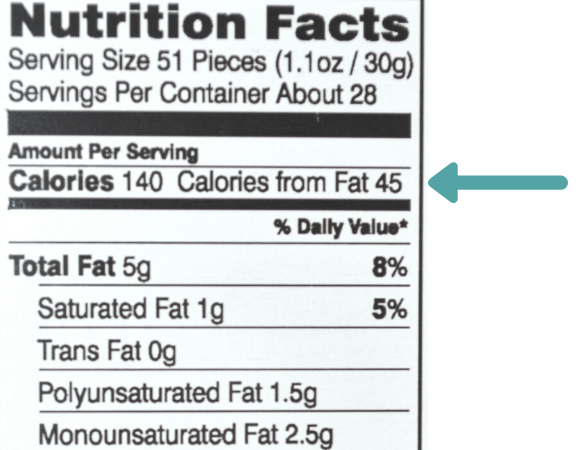
The number of calories tells you how much energy there is in a serving of the food product. Calories are not necessarily bad, it just depends on your goals and on the other nutrients inside the food product. If you’re looking to lose weight then buying lower calorie products may be right for you. But also consider what else is in that product. For example, there is a big difference between a bag of chips and an avocado. Both are high in calories, but the bag of chips has very few other important nutrients in it, while the avocado is very nutrient-dense. Personally, I put less emphasis on the number of calories when choosing my products, and more emphasis on the other nutrients in that food.
Fat and Cholesterol
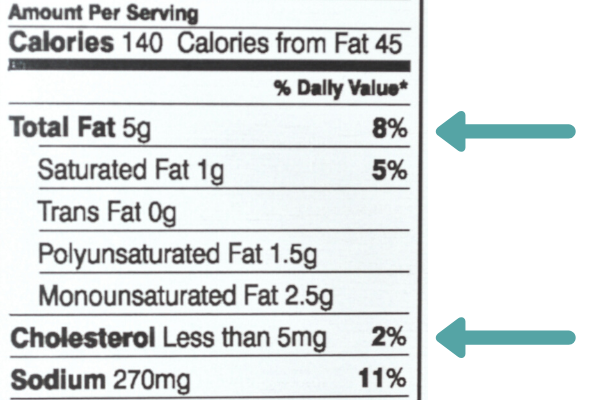
When looking at the fat content of food products, you’re best off choosing products with lower saturated fat and zero trans-fat. Both of these fat types are linked to heart disease. Other types of fats that may be listed include monounsaturated and polyunsaturated fats, but these tend to be “good” fats that you do not have to avoid.
When it comes to cholesterol, contrary to popular belief, dietary cholesterol doesn’t really increase your blood cholesterol and is not associated with heart disease. However, some people may need to avoid it and usually your doctor or dietitian will tell you so. If so, pick products lower in cholesterol. Otherwise, you don’t need to pay much attention to it.
Sodium
This is one to watch out for. Most Canadians consume too much sodium (salt), and this is associated with issues like high blood pressure, which could lead to stroke and heart disease. A lot of the sodium in our diets comes from processed foods. When choosing food products, take a look at the % daily value of sodium and choose products that contain less than 15%.
Carbohydrates: Fibre and Sugar
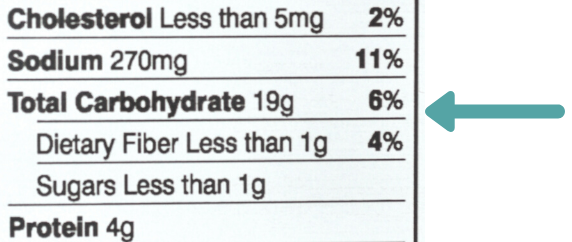
When choosing products, there is usually no need to avoid carb-containing foods. There are many types of carbohydrates, but for simplicity, the nutrition facts table only shows two – sugar and fibre. In general, you want to choose foods lower in sugar and higher in fibre. Added sugar can contribute to the development of chronic health conditions like diabetes and heart disease. Fibre is good for you for many reasons, including regulation of blood sugar levels, lower blood cholesterol, and increased regularity.
Protein
Most Canadians consume enough protein, so whether or not you look at the amount of protein in a food product depends on your personal goals and current diet. Vegetarians and vegans, older adults, and those who work out regularly may want to choose foods higher in protein. Some people with chronic conditions may require lower protein intakes. Your doctor or dietitian will be able to tell you how much protein you need.
Vitamins and Minerals
The types of vitamins and minerals listed on the nutrition facts table differ from country to country and even from product to product. In Canada, the new table will require different vitamins and minerals from the old one, and for good reasons. Most Canadians get enough Vitamins A and C, so these are not really nutrients of concern and will be removed from the label. However, many Canadians do not consume enough potassium, calcium, and iron. This is why these nutrients are on the new version of the nutrition facts table, and why in general it is best to choose foods that are high in potassium, calcium, and iron (more than 15% DV). Some nutrition facts tables will also display other nutrients, and there is no problem with this, but don’t let that sway you when you decide between different products, unless specifically told so by your doctor or dietitian.
List of Ingredients
The list of ingredients is there to let you know which ingredients are in the product, and you can use it to choose products depending on your needs and preferences. If you are intolerant or allergic to certain ingredients, you can look for them in the list and buy products that do not contain those ingredients.
Added Sugars
Try to avoid products with sugar listed high on the list, because that means it is present in the food in high quantities. In the older Canadian version of the ingredients list, as well as in many other countries’ ingredients lists, manufacturers was able to “hide” sugar by listing it in different forms over and over again. So you could see ingredient lists with words like “dextrose”, “brown sugar”, “fructose”, “molasses”, etc. All of these mean added sugar! So when looking at the ingredients, watch out for this, and google ingredients you don’t recognize.
This will no longer be an issue in the newer version of the Canadian ingredients list because manufacturers will have to include all sugar types under “sugars” – see the example below.
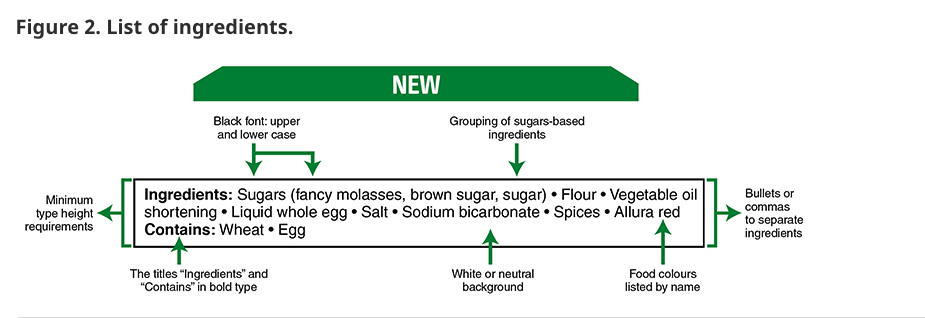
What are Nutrition Claims?
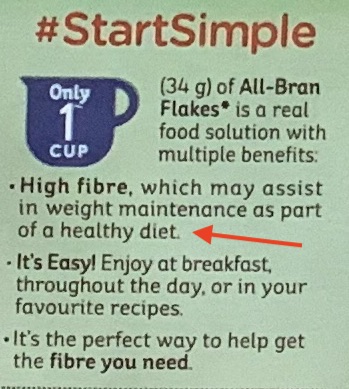
Nutrition claims are claims that manufacturers can put on certain food products regarding their nutrient content and health benefits. Manufacturers can’t put whatever claims they want, only what the government allows. In the US and Canada, there are nutrient content claims and health claims. Nutrient content claims just let you know that the food product is high or low in a certain nutrient. Examples are “low fat” and “good source of iron”. Health claims let you know that the food has helpful effects on health. For example, “A healthy diet low in saturated and trans fat may reduce the risk of heart disease”. In general, you can use either type of claim to guide your food choices.
A Note on Non-Labeled Foods
This post is meant for those foods that have food labels, but many healthy foods are not labeled at all. These include fresh fruits and vegetables, as well as raw meats, poultry, fish, and seafood. These foods are certainly part of a healthy diet and should be part of your grocery list!
The Bottom Line
1. Look at the serving size first
2. Choose foods with lower saturated fat, trans fat, sodium, and sugar
3. Choose foods with higher fibre, vitamins, and minerals, especially potassium, iron, calcium, and any other nutrients recommended by your doctor or dietitian
